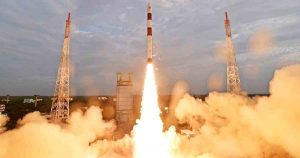Chandrayaan-3 Successfully Lands On Moon’s South Pole:

Chandrayaan-3 made history by becoming the first mission to soft-land on the lunar south pole, a region that has never been explored before.
- The mission aimed to demonstrate safe and soft lunar landing, rover mobility, and in-situ scientific experiments.
- India now joins the United States, Russia, and China as one of the few countries to successfully land on the Moon.
- Chandrayaan-3’s successful landing came after the setback of the Chandrayaan-2 mission’s landing failure in 2019.
- The Vikram lander of Chandrayaan-2 had lost control and communication during descent, leading to a crash on the lunar surface.
- Chandrayaan-3 is expected to operate for at least one lunar day (14 Earth days) on the lunar surface.
- The Pragyan rover will move around the landing site within a radius of 500 meters, conducting experiments and sending data and images to the lander.
- The Vikram lander will relay the data and images to the orbiter, which will then transmit them to Earth.
- Lander and Rover modules are collectively equipped with advanced scientific payloads.
- These instruments are designed to conduct comprehensive investigations into diverse facets of lunar characteristics, encompassing terrain analysis, mineralogical composition, surface chemistry, atmospheric attributes, and crucially, the exploration for water and potential resource reservoirs.
- The propulsion module that carried the lander and rover configuration till 100 km lunar orbit also has a Spectro-polarimetry of Habitable Planet Earth (SHAPE) payload to study the spectral and Polari metric measurements of Earth from the lunar orbit.




